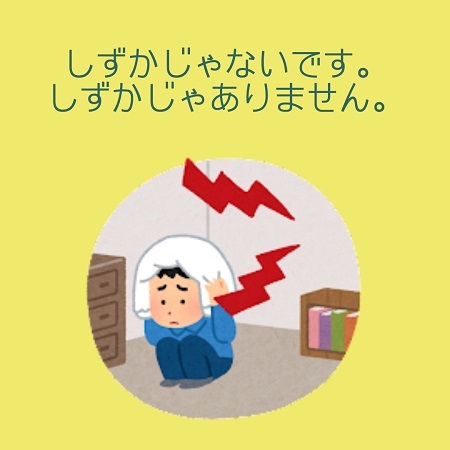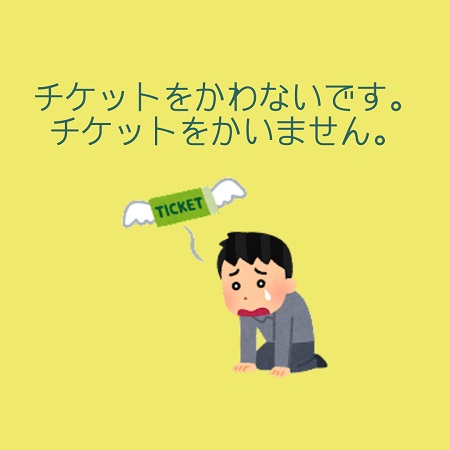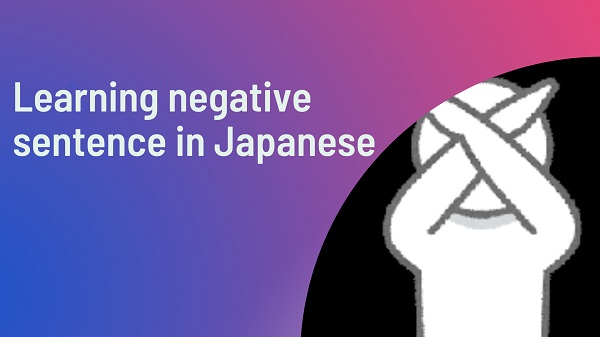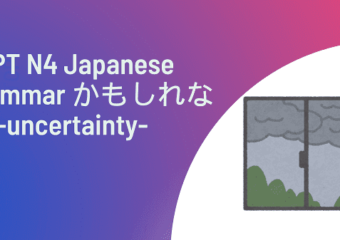How can we make negative sentences in Japanese?
In this article, I will teach you how to create negative sentences in Japanese.
Noun

There are two ways to make negative sentences for nouns, which are ではありません or ではないです。
Noun+ではありません/ではないです
A: あなたはアメリカじんですか。
B: いいえ、アメリカじんじゃ(では)ありません。
or いいえ、あめりかじんじゃ(では)ないです。
Let’s learn more.
What’s the difference between じゃない and ではない.
We use じゃない when speaking most of the time and we use ではない more when writing.
What’s the difference between ではないです and ではありません?
These are no special differences, so you can use either.
I use じゃないです more, but I don’t know about other people.
Plain form is ない.
ナ adjective

What’s ナadjective?
Please read this article.
Learning Japanese grammar-adjectives conjugation
We take な and add ではありません or ではないです。
Let’s see the example with しずかな(quiet).
しずかな→しずか→しずかではありません・しずかではないです。
How do you say he isn’t famous in Japanese?
Let’s change this sentence to negative form.
かれは (ゆうめいです).
The answer is…
かれはゆうめいではありません。or かれはゆうめいではないです。
Plain form is ない.
かれはゆうめいではない。
イadjective

If you don’t know what an イadjective is, please read this article too.
Learning Japanese grammar-adjectives conjugation
We change い to くありません or くないです。
Let’s see the example with おおきい(big).
おおきい→おおき→おおきくありません or おおきくないです。
Plain form is くない.
おおきくない。
I use くないです more, but I don’t know about other people.
verb

There are three groups for verb conjugation.
If you don’t know what group1, group2 and group3 verbs are, please read this article.
Japanese verb conjugation rule with chart
Group1
Plain Form
We change u sound to a + ない.
Let’s try an example with かく( to write)
かく(kaku)→かかない(kakanai)
If the word ends in う, it changes to わない。
かう→かわない
※かう means buy.
Polite Form
We change u sound to i + ません。
For example,
かく(kaku)→かきません(kakimasen)
かう(kau)→かいません(kaimasen)
group2
We take る and add ない or ません.
For example,
みる→み→みません・みない。
たべる→たべ→たべません・たべない。
group3
Group3 is irregular verb and there are only two irregular verbs, くる and する.
These are irregular verbs, so just memorize conjugations.
くる→こない or きません。
する→しない or しません。
conclusion
| Noun | Noun+じゃ(では)ありません or じゃ(では)ないです | (れい) わたしはアメリカじんじゃ(では)ありません。 わたしはアメリカじんじゃ(では)ないです。 |
| ナadj | Taking な and add じゃ(では)ありません or じゃ(では)ないです | (れい) きれいな この水はきれいじゃ(では)ありません。 この水はきれいじゃ(では)ないです。 |
| イadj | Changing い to くありません or くないです | (れい)あたらしい このいえはあたらしくありません。 このいえはあたらしくないです。 |
| Verb Group1 | Changing u sound to a ない or iません Changing う to わない or いません | (れい) よむ 本をあまりよみません。 本をあまりよまないです。 |
| Verb Group2 | Taking る and add ない or ません | (れい)見る テレビを見ないです。 テレビを見ません。 |
| Verb Group3 | する→しない or しません くる→こない or きません | (れい)せんたくする きょうはせんたくしないです。 きょうはせんたくしません。 |
れんしゅう
You can print it out and fill out.
Let’s change to negative form.
Answer↓
If you have questions, please comment below.
If you’d like to learn more Japanese, please feel free to contact me.
I teach Japanese in-person or online.
You can also learn Japanese on my Instagram page.



